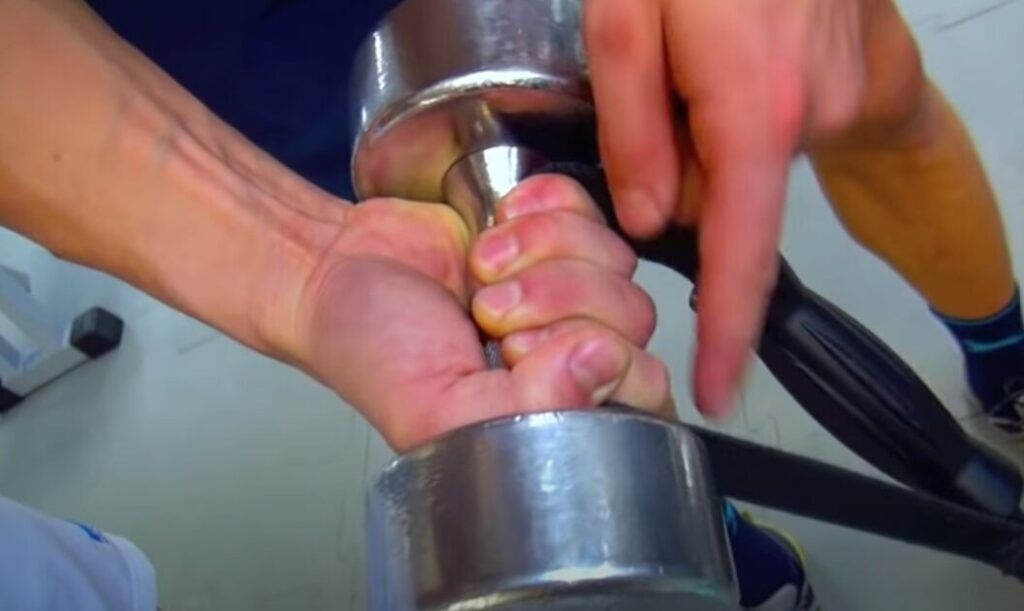Most Italians are not as conscious about workouts as Americans are. Though they have a lot of gyms for workouts, they have no interest in doing it. So, this article is for those people who want to make Italian fitness routines and workouts.
Things can get hard when you move abroad, particularly when it comes to staying fit. In Italy, not speaking the language can make it fearful to enroll in a gym or start playing a sport. But people are becoming more interested in competitive sports like CrossFit, basketball, rugby, and Padel.
Italy has a lot of different kinds of exercise culture, but three-month workout plans are very popular. Start going to the gym right away. It does not require 8 or 12 weeks. If you can make it through the first month, you can set yourself up for continued muscle growth. If you start going to the gym, you can get over the “hump” and make strength gains that last.
We can now begin to make your daily and monthly workout plans that you will follow!
Why You Need Workouts?

Is a workout good for health? A lot of research has shown that a regular workout is very good for your health.
Its main benefits are that it lowers your chance of chronic diseases and helps you reach and keep a healthy weight and muscle mass.
Research has also shown that exercise can improve your mental health, make you feel better, help you sleep better, and even make your sex life better.
That’s not all. Plus, it can help you keep up your energy.
Moving around a lot can help make your life better.
Read More: Italian home cooking: Best recipes for you
Common Types Of Exercise In Italy

What are the common types of workouts in Italy? Cardio, weight training, aerobics, high-intensity interval training (HIIT), boot camps, flexibility, and stability training are some of the most common forms of exercise. They may be done alone or in combination.
7 Types Of Exercise Include:
- Aerobic: Continuous mobility should be the foundation of any fitness regimen such as swimming, jogging, and dancing in Italian fitness routines and workouts.
- Strength: Muscle strength increases with these workouts. Resistance, plyometrics, weightlifting, and sprinting are examples.
- Calisthenics: Large muscle groups are used in these routines without gym equipment. A medium aerobic tempo is used. Lunges, situps, pushups, pullups.
- HIIT: This workout involves brief bursts of high-intensity activity followed by rest or low-intensity activities.
- Boot camps: These timed, high-intensity circuits mix aerobic and resistance training.
- Stability: These workouts build muscle and coordination. Pilates, tai chi, and core strengthening are examples.
- Flexibility: These workouts improve muscle healing, range of motion, and injury prevention. Yoga and muscle stretching are examples.
The preceding activities may be done alone or together. What matters is doing what works for you and having fun.
Read More: Safety tips to travel in Italy
What Are The Italian Fitness Routines And Workouts?
What is the best way to fit your body? One of the greatest ways to improve your health is to exercise regularly. Integrating it into your schedule and maintaining it may require self-control and resolve. You can maintain it with the aid of certain tactics.
Not only is this program great for those who have never lifted a weight before, but it is also great for those who have been away from training for a while.
In the last several months, have you maintained a regular exercise routine? Is that six months? How about a year? What, five years? Not a problem: If you follow these steps, you will be back on track in as little as four weeks. Now, let’s start.
Italian Workout At A Glance
- Week 1: Full-body split
- Week 2: 2-day split: Upper body/Lower body
- Week 3: 3-day split: Push/Pull/Legs
- Week 4: 4-day split: Full-body
WEEK 1: ALL IN ONE PLACE
Starting the course with a full-body training split, you will exercise every major body part in every session. Train three days a week, focusing on a single workout per body part throughout each session. Give your body a day off between workouts to allow it to heal. Exercise on Mondays, Wednesdays, Fridays, and Saturdays, taking Saturdays and Sundays off.
In Week 1, you will do three sets of every task, resulting in nine sets overall, depending on your needs. Do 8-12 repetitions every set, excluding crunches for the abs. This repetition scheme is considered the best for increasing muscle growth (hypertrophy).
`You have to do eight repetitions for the first set, the second sets need 10 repetitions, and the third sets need twelve repetitions. Bodybuilders call this a “reverse pyramid” since you lower the weight with each set to increase reps. For last, pulldown sets two and three, utilize 120 or 130 pounds and 100-120 pounds.
Read More: 10 great ways for Italian home decor
WEEK 2: SPLIT CONCLUSION
With a two-day workout split, you’ll start working out different parts of your body on different days. This is because you’ll be working out your whole body over two days instead of one as you did in the first week.
This week you’ll work out four days, with two days for your upper body (Monday and Thursday) and two days for your lower body (Tuesday and Friday). You’ll work out each body part twice. Your days off will be Wednesday, Saturday, and Sunday.
In Week 2, some movements from Week 1 are carried over, but one new move is added to each body practice (except for the abs) so that you can work out all of your muscle groups from more than one angle.
For example, the chest has two exercises: On the one hand, the dumbbell flye works the pecs more than any other muscle group because it only uses one joint (the shoulder). The complex movement, the dumbbell bench press, uses multiple joints (the shoulder and arm) to work the most muscles in Italian fitness routines and workouts.
You’ll use a reverse pyramid to track your reps again, but on your third set of each exercise in Week 2, you’ll do a few more (15 instead of 12). While fifteen reps may not be the best number for growing muscle, these sets will help you build muscle stamina, which will help you build size and power in the future.
WEEK 3: THREE ON THREE
To increase the level of intensity, we go to a three-day workout split during the third week of the program. The first day of training should focus on pulling muscles including shoulders, chest, and triceps.
Pulling exercises for the back, biceps, and abdomen are scheduled for Day 2. Day 3 targets the quads, glutes, hamstrings, and calves. In Week 2, you’ll workout each body part twice a week, for six gym sessions.
Each body part program includes an extra workout to provide target muscles with more training angles and aid muscular development. Two 3- to 4-set workouts will target each muscle. The chest, back, shoulders, quadriceps, and hamstrings will get four sets, while the biceps, triceps, abs, and calves will get three. In a week, larger body parts get 16 sets and smaller ones 12. This is a big volume increase from Week 1. The sets are 8-15 reps.
WEEK 4:INCREASING THE VOLUME
You’ll work out for four days in a four-way split that hits every body part only once in the fourth and last week of the workout regimen. Professional lifters often employ four-day splits because they train fewer body parts (usually two or three) per day, giving each muscle group plenty of focus and enabling you to train at a larger volume.
The pairings of the chest and triceps, the back and biceps, and the quads and hamstrings are all rather frequent among both rookie and experienced bodybuilders, as you will see.
Almost entirely on their own, shoulders are worked, and with every other exercise, you’ll alternate between working your calves and abs, which benefit from numerous weekly workouts. Week Four does not include any new exercises so you can concentrate on working out intensely rather than picking up new moves.
Although rep schemes stay in the hypertrophy zone this week, total volume rises by adding additional sets to specific exercises—up to five sets per move for bigger body parts, and even ten sets of calf raises on Thursday.
This increase in volume will guarantee that your muscles are adequately overworked to carry on the development they have already started to experience throughout the first three weeks. After finishing this four-week program, you are now qualified to advance to the next one.
Benefits of workout

What are the advantages of workouts? The advantages of workouts can not be described in words. Here are some most important benefits of workouts:
- The Part Exercise Plays in Health and Weight Control
- Exercise promotes obesity prevention and weight management.
- Because it strengthens and circulates the heart, heart problems like excessive cholesterol, coronary artery disease, and heart attacks are less common.
- Frequent exercise lowers triglyceride and blood pressure; it helps control insulin and blood sugar levels, which lowers the risk of type 2 diabetes and metabolic syndrome; and it helps stop smoking by lessening withdrawal symptoms and cravings.
- Chemicals that are released during exercise enhance mood and lower the chance of
- Reducing depression & enhancing mental health.
Regular physical activity strengthens muscles and bones, enabling to creation of strong bones and reducing the decline of bone density with age. It also stimulates the body to produce proteins and hormones that enhance brain structure and function.
FAQs On Italian Fitness Routines And Workouts
How to start a gym routine?
If you are new to working out, you should begin by working out a few days per week. As you grow stronger, you should progressively increase the frequency of your exercises as well as the level of difficulty of your workouts.
Pay Attention to Your Body. Take a break and rest if you are experiencing any discomfort. Be careful not to put too much pressure on yourself, particularly in the beginning.
What Is The Best GYM Schedule?
A: You should go for three days of weightlifting, two days of cardiovascular workout, and two days of rest into your workout routine if you have to work out five times per week and improve both your strength and cardiovascular fitness.
Considering your objectives if you want to exercise 4 days a week: To increase your muscle mass, you have to eliminate one of your cardio days.
Can I Train Full Body Every Day?
It is impossible to gain optimal results by doing full-body exercises regularly since you need recovery periods in between each session. This indicates that you just need to attend around three times per week, with days off in between each visit.
Conclusion
To make a new workout routine can be difficult. However, having attainable goals can aid in the long-term fitness regimen in Italian fitness routines and workouts. There are an extensive variety of physical activities from which to choose. Check out which ones perform best for you, and ensure to occasionally alter them.
To reduce injuries, it is essential to start gradually, gradually increase your fitness level, and periodically recover your body. If you are unable to do it, go for an online course.
Moreover, it is hard to maintain regular hydration and consume a nutritious diet, while consulting your medical doctor for health monitoring.




